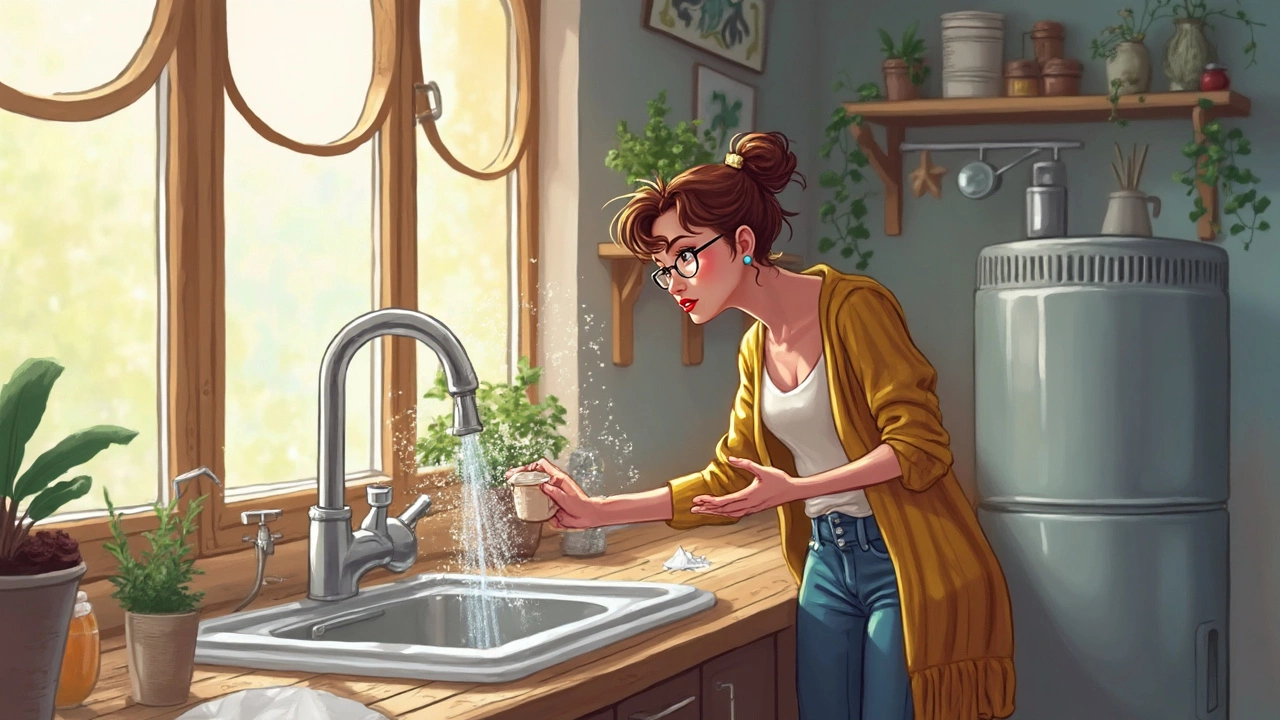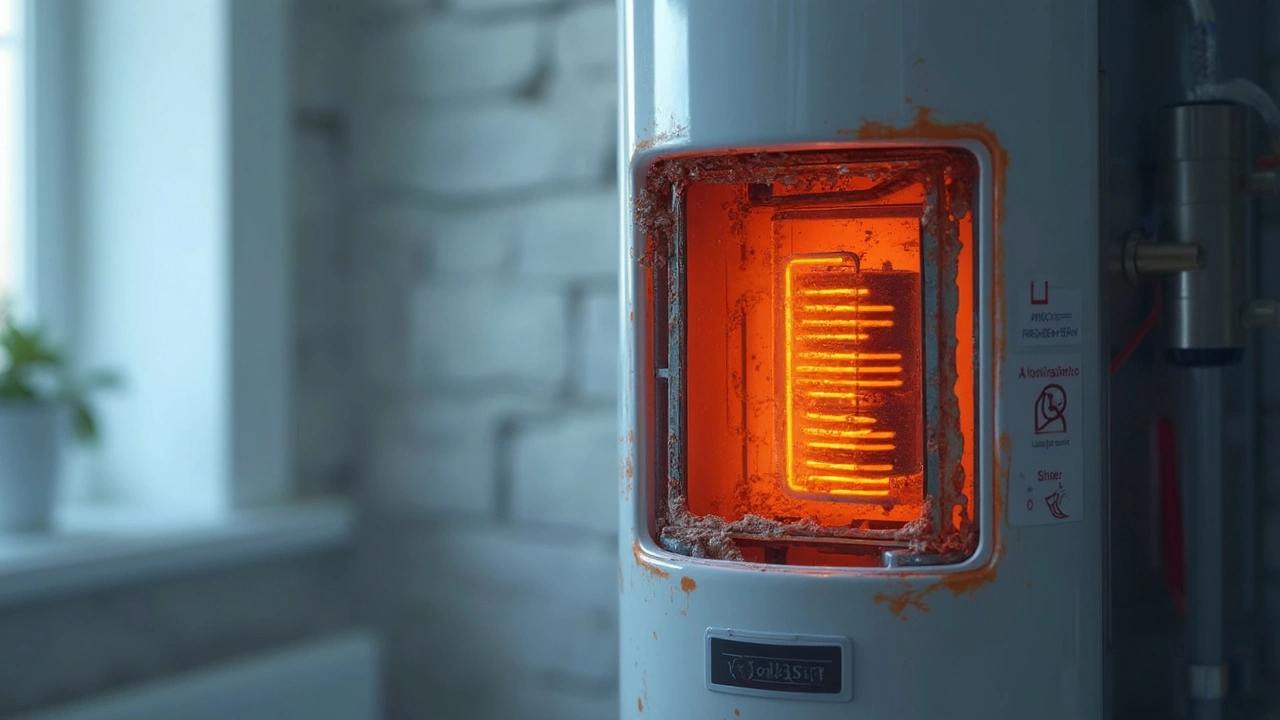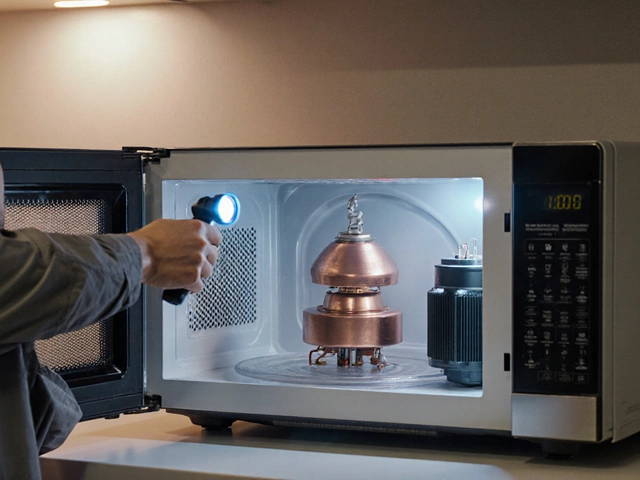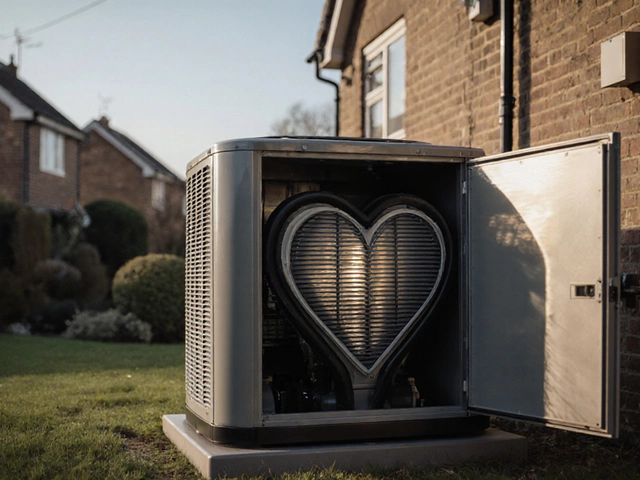Ever hop in the shower expecting it hot—only to get an icy slap the second you rinse off? Yep, that’s usually a red flag your water heater’s element might be shot. But before you order a new heater or waste cash on guesses, there are a few ways to tell if it’s really the element to blame.
First thing: if your water isn’t getting hot—just lukewarm or bone cold—you’ve got grounds to suspect the element. It can also show up as really slow water heating or the hot water running out super fast. Some people notice their water heater making odd popping or sizzling sounds; that can happen when the element has a build-up or is starting to burn out. If you’re seeing any of these, you’re in the right place to troubleshoot.
It’s not rocket science to check this stuff yourself, and you don’t need fancy tools—just a little patience and a good eye. With a bit of know-how, you can spot a worn-out element and avoid those freezing surprises. Let’s look at the dead giveaways and what you can do about them.
- Obvious Signs Your Element Is Bad
- Quick Tests You Can Do at Home
- Tools You Might Need
- Is It the Element or Something Else?
- What to Do Next
Obvious Signs Your Element Is Bad
Ever noticed a drop in hot water, or maybe the water’s only halfway warm? That’s often a screaming clue that the hot water heater element tapped out. It’s honestly one of the top reasons folks call repair guys. But before you ask someone to show up, see if you recognize these symptoms first.
- No hot water at all: If both showers and sinks only run cold, odds are high both elements in your electric heater conked out. If you have just warm water for a short time, one element might still work.
- Water temperature suddenly drops: Ever start with hot water but end up shivering in a minute or two? That’s usually a lower element issue.
- Water heats up super slow: If you’re used to waiting a few minutes for hot water, and now it takes half an hour, something’s up.
- Weird noises: You might hear popping, crackling, or hissing from the tank. That’s sediment baking onto the element or a failing element gasping for life.
- Breaker trips often: If your water heater trips the circuit breaker frequently, the element could be shorting out—which is both annoying and unsafe.
Here’s a quick summary of what these issues could mean, so you don’t have to play plumber detective in the dark:
| Symptom | What It Might Mean |
|---|---|
| No hot water | Both elements dead or electrical issue |
| Short hot water | Lower element failed |
| Slow heating | Element weakened by age or sediment |
| Noises (popping/crackling) | Sediment on element or element failing |
| Breaker trips | Element shorting/electrical fault |
Most water heater elements give out after 6 to 10 years, depending on how hard your water is and how much hot water your family uses. Hard water can kill an element even faster with all that mineral build-up. If your unit’s old or showing these warnings, don’t ignore it—you can test the element or call in someone to check before you’re stuck with stone-cold showers for days.
Quick Tests You Can Do at Home
No need to panic or grab your toolbox just yet. You can check a hot water heater element with a few basic steps. It’s safer and cheaper than guessing or calling in help too early. Always turn off the power at your circuit breaker before poking around—water heaters run on 240 volts, which is nothing to mess with.
Here’s how you can see if your hot water heater element is the culprit:
- Check for Power
If you’ve got no hot water, check the circuit breaker. Flip it off and back on. Sometimes, it’s just a tripped breaker that needs a reset. - Test for Lukewarm Water
If water gets lukewarm but not hot, odds are only one of the two elements has failed. Most tank water heaters use a top and bottom element. If just the bottom goes bad, you get a tiny bit of hot water, then it’s gone. - Breaker Sniff Test
Sometimes, when the element shorts out, it can trip the breaker repeatedly. A breaker that keeps flipping back to off is a big clue the element’s bad. - DIY Resistance Test
If you’re comfortable with basic tools, you can use a $15 multimeter. Unscrew the access panel on the side of your heater and remove the insulation. Place the multimeter probes on the heater element screws to check resistance—typically, you’ll see between 10-16 ohms. Zero or infinity means the element is dead.
If you like charts, here's a handy guide for what your multimeter readings mean:
| Reading (Ohms) | What It Means |
|---|---|
| 10-16 | Element is good |
| 0 | Element is shorted out (bad) |
| Infinity (open loop) | Element is broken (bad) |
Not comfy with a multimeter? No worries, even smelling a burnt wire or seeing scorch marks in the panel can scream "change me!" about your element. Just remember, if you’re ever unsure, you’re better off calling a pro than getting zapped or making things worse.

Tools You Might Need
Before you start poking around your water heater, you’ll want to have a few things ready. Nothing crazy—just some everyday tools that make the job safer and easier. Trust me, you don’t have to be a pro to use these. Here’s what to grab from your toolbox or the local hardware store:
- Multimeter: This is the hero tool for testing a hot water heater element’s health. You’ll use it to check if the element’s got continuity (meaning it’ll actually heat up).
- Phillips and Flathead Screwdrivers: Needed to open up panels and access the element connections.
- Socket Wrench or Element Wrench: Some elements screw in tight—it’s way easier to remove them with the right size wrench. Most heater elements take a 1-1/2 inch socket or a special element wrench.
- Non-contact Voltage Tester: Always double-check there’s no electricity running before you touch anything. This tester beeps or lights up if there’s still juice.
- Work Gloves and Safety Glasses: Protect yourself from sharp panels and occasional spray from the tank.
If you need to replace the hot water heater element, having a new element and Teflon tape for the threads is also smart.
Here’s a simple breakdown of these tools, what they do, and about how much you’ll spend at most stores:
| Tool | Main Use | Average Price (USD) |
|---|---|---|
| Multimeter | Test for live voltage and check continuity in the element | $15 – $30 |
| Philips/Flathead Screwdrivers | Remove and replace panel screws | $5 – $15 each |
| Socket or Element Wrench | Unscrew old element, tighten new one | $9 – $20 |
| Non-contact Voltage Tester | Check for electrical safety | $10 – $25 |
| Work Gloves, Safety Glasses | Personal protection | $5 – $10 each |
Don't skip the safety stuff. Seriously—people end up in the ER every year from ignoring basics like voltage testers and gloves. Just a little prep goes a long way.
Is It the Element or Something Else?
Before you bet it all on a burnt-out element, it’s smart to check some other usual suspects that can cause your water heater headaches. Plenty of things can mess with your hot water—not just a bad element. Let’s get into what else might be going on.
First up, a tripped circuit breaker or blown fuse will kill your water heater’s power completely. That means the tank won’t even try to heat up. Sometimes it’s as simple as flipping a breaker back on. Don’t forget the reset button on your water heater, too. It’s like a built-in safety switch—if it trips, your heater shuts off for safety, and all the hot water stops.
Another thing that gets overlooked? Thermostats. Each heating element usually has its own thermostat. If those quit or get misadjusted, it’s going to mess with your hot water supply no matter how new the element is. Even sediment buildup in the tank (especially in hard water areas) can cause your heater to act up by covering the element and making it overheat.
Here’s a breakdown of what might be at play if your hot water is flaky:
- Bad or tripped breaker (no power)
- Tripped reset button
- Broken thermostat
- Sediment buildup in tank
- Leaking tank or blown gasket
- Old or faulty wiring
"In about 35% of no-hot-water calls we see, something besides the heating element is the real cause—simple fixes like breaker resets or thermostats," says Robert Yount, a certified technician at Hot Water Pros.
Check out some data showing what typically causes hot water heater problems:
| Problem | % of Cases |
|---|---|
| Tripped Breaker/Reset | 25% |
| Bad Heating Element | 45% |
| Thermostat Failure | 15% |
| Sediment/Other | 15% |
Thinking it through before replacing parts saves money and hassle. Run through the checklist: power, thermostats, and look for leaks or loose wires. If you aren’t sure, snapping a quick photo of your water heater setup and asking an expert can be worth its weight in gold.

What to Do Next
If you’ve got all the signs pointing to a bad heating element, don’t panic—you’ve got options. Replacing a hot water heater element isn’t a job only for pros, but if you’re not feeling confident or you’re dealing with a warranty, calling a plumber might be your best move.
If you want to tackle the job yourself, you’ll need a few simple parts and tools: a replacement element (make sure it matches your model), a socket wrench, a voltage tester, and possibly a garden hose. Here are the basic steps—follow them in this order, and you’ll be less likely to run into trouble:
- Turn off the power. Don’t just flip the switch—actually shut down the breaker for the water heater.
- Double-check there’s no power by using a voltage tester on the wires connected to your heater.
- Drain a few gallons of water. Hook the hose to your heater’s drain valve and run a few gallons out, just so water doesn’t spill when you open it up.
- Unscrew the element cover and remove the old heating element.
- Pop in the new element, making sure you’re not cross-threading or overtightening. Refill the tank (close the drain!) and check connections.
- Turn the power back on, and keep an eye out for leaks and listen for normal operating sounds.
Typical electric hot water heater elements cost between $15 and $40. Professional installation might set you back $100 to $300, depending on your location and the heater size. For comparison, here’s a quick breakdown:
| Replacement Option | Average Cost |
|---|---|
| DIY (parts only) | $15–$40 |
| Pro Installation | $100–$300 |
If you keep having issues, they could be from something bigger like a broken thermostat, sediment clogging, or even the whole water heater nearing its end. Most electric water heaters last 8–12 years before major parts start failing regularly. If yours is pushing that age, weigh the cost of repair against replacing the whole unit.
One last tip: Always read your specific water heater’s manual. Every model can have little quirks, and the manufacturer’s advice might just save you from an extra headache—and another cold shower.





